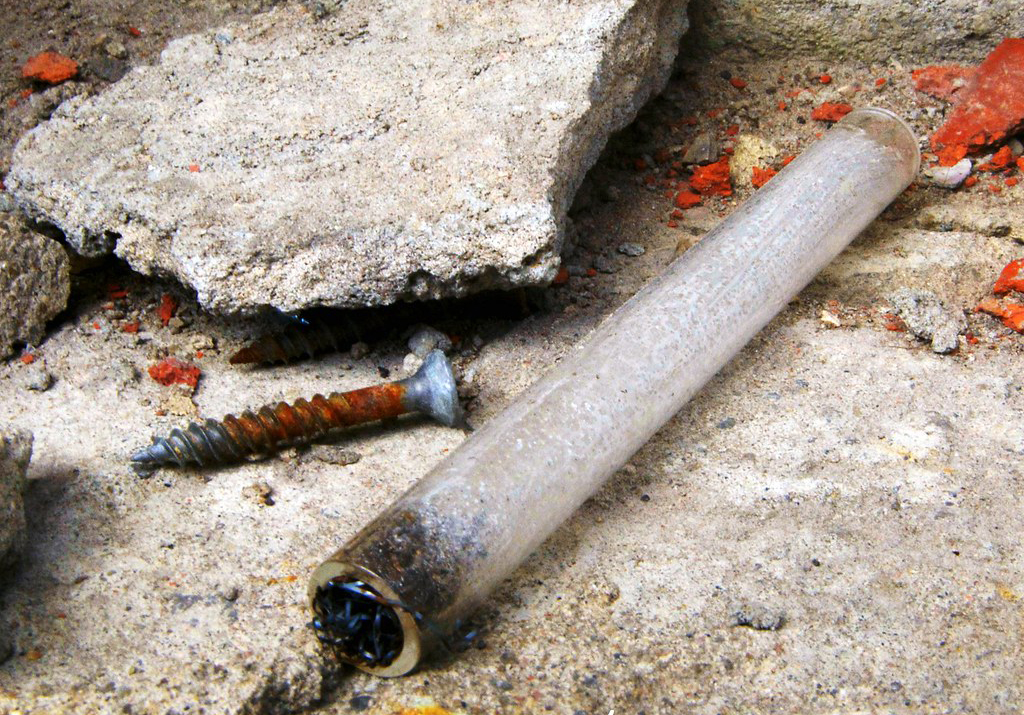As coronavirus cases climb, San Francisco officials have left unchanged a directive against distributing clean pipes to people who smoke drugs, a stance that may hurt efforts to stem the spread of COVID-19 among the city’s drug users, outreach workers said.
“Given how coronavirus is spreading, sharing pipes is a major concern for us,” said Kenneth Kim, senior director of programs at GLIDE, the Tenderloin spiritual organization and social services provider, which distributes harm reduction supplies to people who use drugs. “We think this is an issue that needs to be revisited and changed.”
City officials have said no such policy exists. Department of Public Health spokeswoman Jenna Lane wrote in an email that her department “does not have a specific policy about pipes, so has not given direction to its funded providers about them.” She added that the department supports “evidence-based harm reduction” and city funding “goes to staff and programs – not supplies.”
Outreach program representatives, however, pointed to what they said was a longstanding department directive and said their understanding was that if they distributed clean pipes, their funding could be at risk. If GLIDE workers were to start distributing clean pipes, and the health department found out, the agency’s city funding “could be in jeopardy,” Kim said.
Lane declined to clarify whether this was the case. Because a written policy does not exist, “I have no more information to provide,” she wrote.
Pipe sharing increases the risk of transmitting bloodborne diseases between people who smoke drugs. A shortage of clean, safe-to-use pipes could also increase the risk of coronavirus exposure among drug users who are homeless or have preexisting health conditions, workers from several harm reduction outreach programs said.
Strategy to reduce transmission
Harm reduction is a strategy of providing people who use drugs with equipment intended to reduce disease transmission and deaths from overdoses. Such equipment includes items like clean syringes, alcohol swabs and the opioid-blocking drug naloxone. The San Francisco Department of Public Health adopted the strategy in September 2000, although pipe distribution was not specifically addressed.
The DOPE Project is a nonprofit service group that distributes harm reduction supplies to 20 San Francisco outreach centers that provide direct service to people who use drugs. But it and other harm reduction groups have been advised not to hand out pipes for as long as she can remember, said Kristen Marshall, project manager at the DOPE Project.
While groups like the DOPE Project have voiced their concerns about the unwritten directive in the past, its implications have grown dire during the COVID-19 crisis because in addition to spreading diseases like HIV and hepatitis C, sharing dirty pipes can also increase the chances of transmitting the new coronavirus, she said.
“Not having access to the thing you need to keep yourself safe during a very uncertain and chaotic time is a death sentence,” Marshall said. “It sets people up to be at higher risk for the things our government is saying they want us to be protected against.”
The directive came from a previous Department of Public Health administration, and though it was never made official department policy, harm reduction groups have followed it for years because they understood that their funding depended on it, she said.
Many people who smoke drugs have a hard time finding clean pipes and will instead use old, broken ones made from glass or metal tubes, she said. These homemade pipes often disperse heat poorly or break, causing burned or cut lips that increase the likelihood of transmitting bloodborne diseases between smokers, Marshall said.
A 2004 study of people who smoke crack found an association between those who share pipes and hepatitis C infection. Now, sharing a pipe could mean sharing the coronavirus, she said.
How the city reacted to previous efforts
In 2014, an independently funded harm reduction group called the Urban Survivors Network — now called the Urban Survivors Union — announced it would hand out free crack pipes in an initiative similar to existing needle exchange programs. Though the health department has taken a harm reduction focus for nearly 20 years by supporting syringe access programs and naloxone distribution, city leaders frowned on the free pipe program.
KPIX asked then-health department head Barbara Garcia at the time if the city would also support pipe exchanges.
“I would say ‘absolutely no, we are not going to distribute crack pipes,’” Garcia said. “We have a lot of things to consider for those who are using crack for improving their health. And the distribution of crack pipes is not something I’m going to consider.”
After city-funded groups expressed interest in replicating the pipe exchange, health department representatives “said directly to our programs, ‘No, you cannot use city funding to purchase those supplies,’” said Marshall of the DOPE Project. One reason for the ban could be the relatively few studies that have been conducted on disease transmission rates among pipe sharers compared to injection drug users, she added.
An array of studies has demonstrated the benefit of clean needle access and widespread and longstanding syringe exchanges have normalized the practice. In comparison, a stigma still hangs over drug smokers and consequently, pipe distribution, said Ali Lazarus, GLIDE syringe access services coordinator.
It is “ridiculous” that outreach workers are barred from also distributing clean pipes, particularly during a viral pandemic, she said. “Not only are we saying to people that smoke drugs that we don’t serve them, we are also very actively not preventing the spread of COVID-19.”
California state law allows local governments to decide what harm reduction supplies are appropriate to distribute, and city-funded outreach groups are currently allowed to distribute a fairly wide range of supplies related to drug smoking.
“The programs are allowed to hand out Brillo, pipe covers, push sticks, screens for inside the pipe, and foil,” Marshall said, referring to every element necessary to smoke crack except a lighter, a clean pipe, and the crack itself. “It’s a strange hill for them to die on.”
A list of open harm reduction centers, courtesy of the DOPE Project:
· 6th Street Harm Reduction Center, 117 6th Street: Mon – Fri, 11 a.m. – 4 p.m. & Sat 4 – 8 p.m.
· Glide Harm Reduction Services, 311 Ellis (OUTSIDE): Mon – Fri, 9 a.m. – 5 p.m.
· SF Drug Users Union, 170 Turk Street: Monday – Thursday, 12:30 – 7 p.m.
· Homeless Youth Alliance, 558 Clayton (@ Haight): Mon, Wed, Fri, 5:30 – 7:30 p.m.
· St. James Infirmary, 730 Polk Street 1st floor: Tues, Wed, Thurs: 5:30 – 7:30 p.m. & Friday @ 234 Eddy, 6 – 8 p.m.
· Hospitality House Tenderloin Self-Help Center, 146 Leavenworth: Mon – Fri, 7:15 a.m. – 5 p.m.
· *Tom Waddell Clinic, 230 Golden Gate: Mon – Fri, 8 a.m. – 5 p.m. (*you will be screened for flu-like symptoms upon entry, then just ask front desk for Narcan, no other requirements)
· *CBHS Pharmacy, 1380 Howard (@ 10th Street): Mon – Fri, 9 a.m. – 3:30 p.m. (*for nasal kits and/or providers/individuals who wouldn’t normally go to harm reduction programs)
CORRECTION: An incorrect, incomplete version of this story was previously published. The current version is correct.










